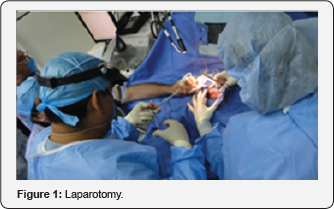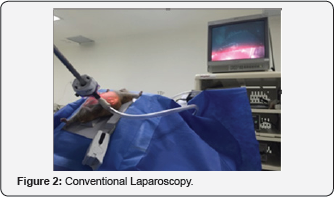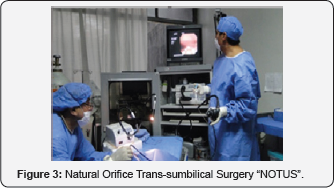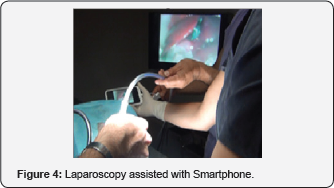Surgeries under Suspended Animation (Hibernation)-Juniper Publishers
Juniper Publishers-Journal of Anesthesia
Abstract
Following surgical techniques were done under
suspended animation in 15 hamsters, open surgeries, NOTUS (Natural
Orifice Trans umbilical Surgery), conventional laparoscopy and
laparoscopy with smart phones.
Keywords: Suspended animation; Hibernation; Laparoscopic surgery; Smart phoneIntroduction
The first idea to offer a Minimally Invasive
Anesthesia (MIA) has given by Prof. Richard M. Satava that consider the
results of several researchers as Brian M Bames [ 1]
from the Institute of arctic biology, University of Alaska Fairbanks,
in the field of suspended animation or hibernation in mammals. Some
mammals in active live have heart rate 300 beats per minute, respiratory
rate is 150 breaths per minute, body temperature is 37°C. In
hibernating conditions, mammals reduce their metabolic responses as
follows; heart rate 3 beats per minute, respiratory rate is <1
breaths per minute, body temperature is <2°C. The proposal of this
idea is to perform surgeries under suspend animation in the future
because it represent a challenge to perform Minimally Invasive Surgeries
with easy tissue manipulation without bleeding as a big risk in
conventional surgical technique (Open, endoscopic surgery or robotic
surgery). Many ways have been considered to avoid bleeding risks as new
models tools, using computer aided surgery, robots but all of them
reduce a little bit this risk. Surgeon has increased his surgical
training on virtual or animal models with the same proposal, to avoid in
the future risks in real surgeries on humans (Table 1).

Methodology
We induced hibernation on Hamsters (Males
mesocricetus auratus hamsters between 180 to 200grs) under 4°C for 30
minutes, darkness and CO2 into a cooler with 125ml per minute of CO2
during 30 seconds [ 2].
Hamsters presented apnea and we begin the surgery, at the end of each
surgery we gave Oxygen a reason of 3 Lt per minute during 4 minutes
until complete reestablishment with normal heart rate. Without
intravenous line, just intramuscular dipyrone in the preoperative,
abdomen wall was cleaned with benzyl solution and cover the abdomen with
surgical and sterilized cloths. In dorsal decubitus for open surgeries,
and anti-Trendelenburg positions for laparoscopy, hamsters were
positioned. 4 Laparotomies, 1 appendectomy, 1 splenectomy. 7
laparoscopies with NOTUS technique (Olympus endoscopy equipment), 1
conventional laparoscopy, and 1 laparoscopy aided with smart phone (I
Phone G6 and no wiring fiber optic Wi-Fi Endoscope camera HD were used)
instead of conventional laparoscope, were done on 15 hamsters without no
complications in the intra operative. No IV line was used,
intramuscular dipyrone was only used in the first 12 cases. Hibernation
technique for surgery was began at the school of Medicine of Universidad
Panamericana in Mexico City in 2010, NOTUS technique at the Pisanty
Clinic at the ISSSTE in 2011 and in 2017 we began with conventional
laparoscopic surgery and smart phones as laparoscope (Figure 1-4).




Results
15 surgeries were done with no complications in the
intra operative on 15 hamsters. Average surgical time in open surgery
was 16.9 minutes; Average surgical time in NOTUS surgery was 13.27
minutes. Surgical time in conventional laparoscopy was 23 and 25 minutes
using smart phone as laparoscope. We did not use intravenous medication
without endotraqueal intubation or medication for general anesthesia
and equipment. One hamster died in the third day in the postoperative
because the abdomen wall was closed with one suture line. The best
surgical time was in laparoscopy when we used CO2 for insufflations in
pneum operiton eum because there is greater absorption by peritoneum and
the suspended animation was longer. Comparative average measures before
and during surgeries show us preliminary results as followings: heart
rate before 198.6 per minute, heart rate during 166.6 per minute,
breathing after 267 per minute, breathing during 82.8, Temperature
before 36.3oC, temperature during 33.7oC , Bleeding 0.4 ml, recovery in
3.5 minutes average.
Preliminary Conclusion
Surgeries under hibernation are possible, where cost
benefit is big for under graduate students learning surgeries open and
laparoscopic techniques in the Medicine faculty, there is a
disadvantage, the short time in suspended animation that we can improve
if we use a control CO2 flow, low temperature and darkness in the intra
operative to prolong surgical time, more than 20 minutes. On the other
hand, there are many advantages with this technique, for instance,
suspended animation avoid intravenous medication and anesthesia
equipment investment, with these results we have a complete minimal cost
benefit for teaching surgery for universities or faculty of medicine.
On the other hand, when we use smart phone as laparoscope we avoid all
the conventional laparoscopy equipment except CO2 for insufflations and
box laparoscopic instruments. The CO2 absorbed by the peritoneum permit
increase the CO2 blood concentration levels that facilitate hibernation
and permit prolong surgical time and surgeon have more time to review
abdominal cavity and manipulate tissue or organs. Laparoscopy view
permit us corroborate suspended animation watching heart rate and
breathe rate trough the diaphragm. In future works, this application
should be used for research in pediatric surgery for children because
new born has brown fat as many mammals for example bears and others. In
the future, we must improve also this technique having better control of
vital signs, serum levels of CO2 and other tests and CO2 flow to
control suspended animation and prolong surgical time in the intra
operative. We suggest CO2 flow in the intra operative if
hamster weak up and oxygen to apply to the hamster with a mask in case
of respiratory depression and to weak up in the end of each procedure.
Body hamster's temperature breathing and heart rate as well as
environment temperature, CO2 concentration and darkness are an approach
of suspended animation or hibernation description as Professor Dr.
Professor Richard Satava and Brian M Bames said above [ 3],
because the breathing and heart rate are higher in this project, but
hamster's condition allow us perform surgical procedures.
For more articles in Journal of Anesthesia
& Intensive Care Medicine please click on:
https://juniperpublishers.com/jaicm/index.php
https://juniperpublishers.com/jaicm/index.php
Comments
Post a Comment